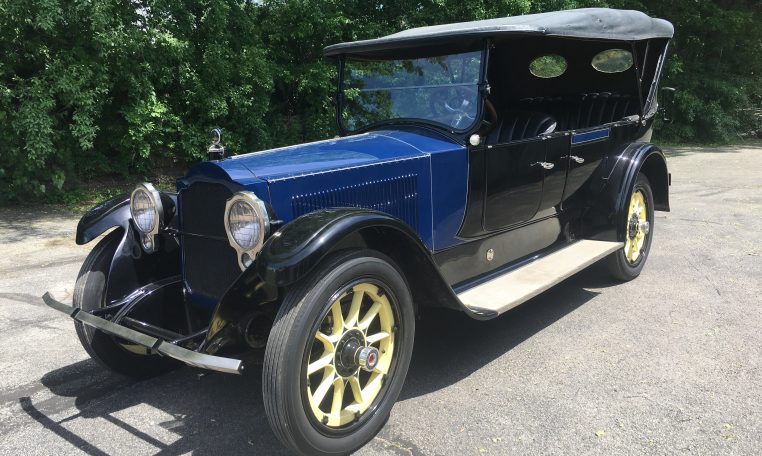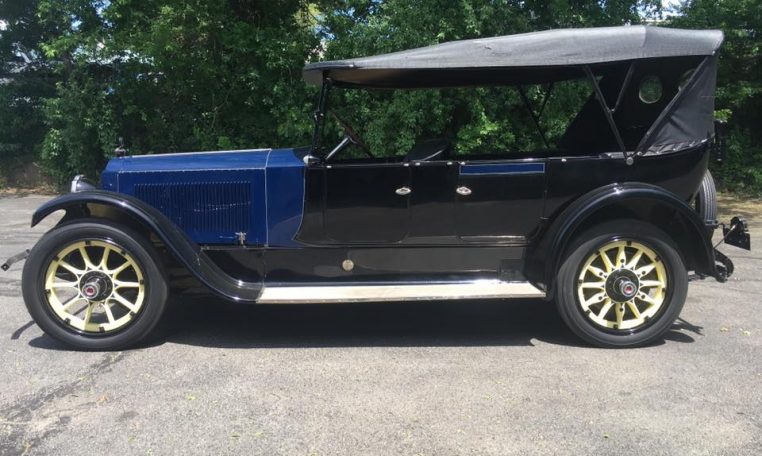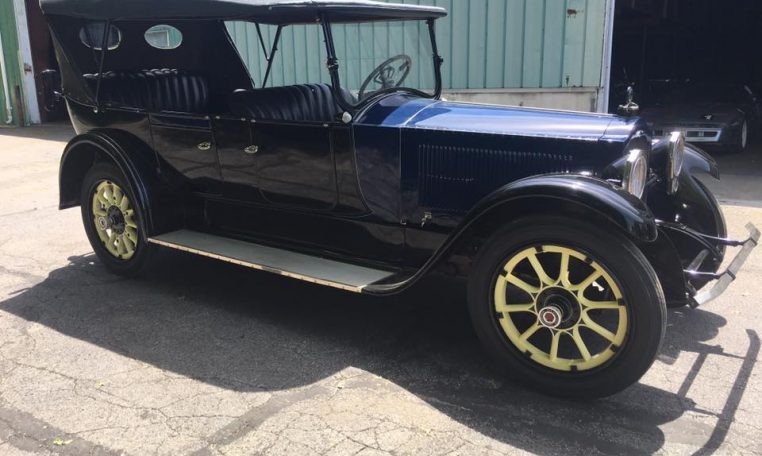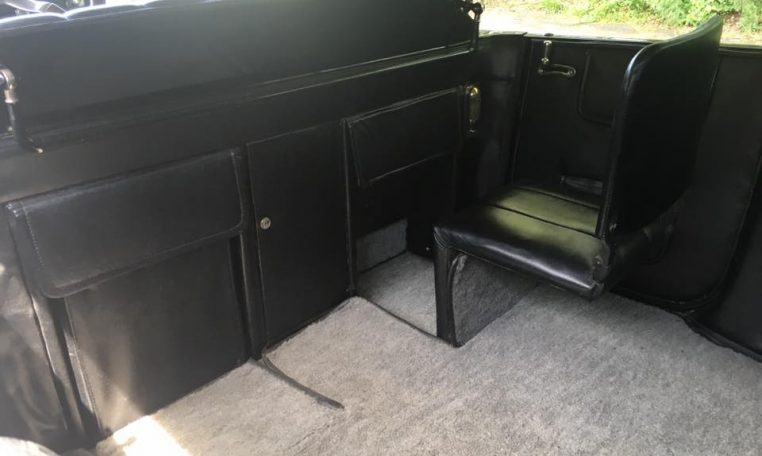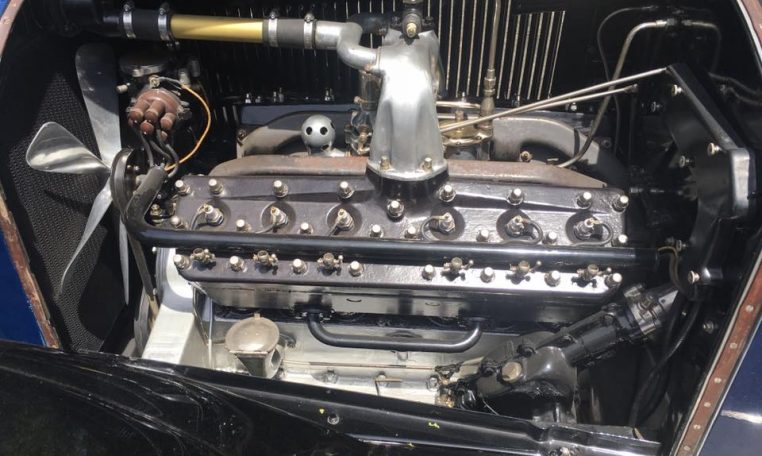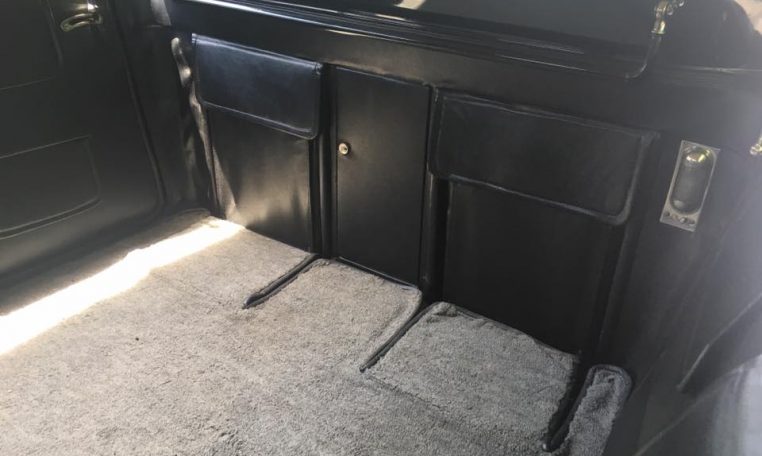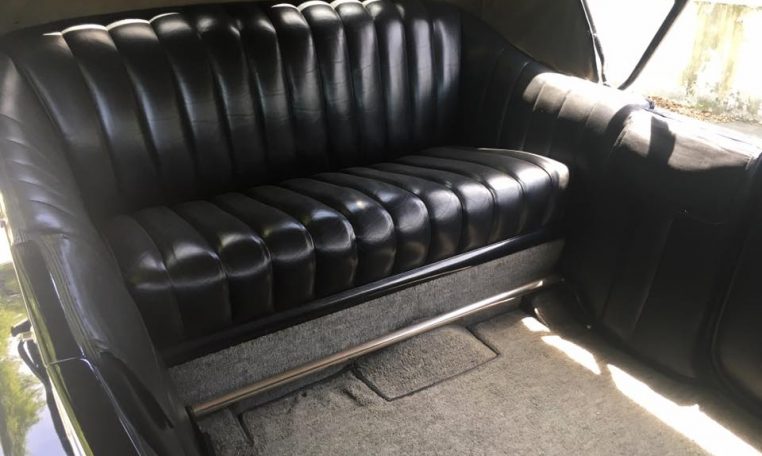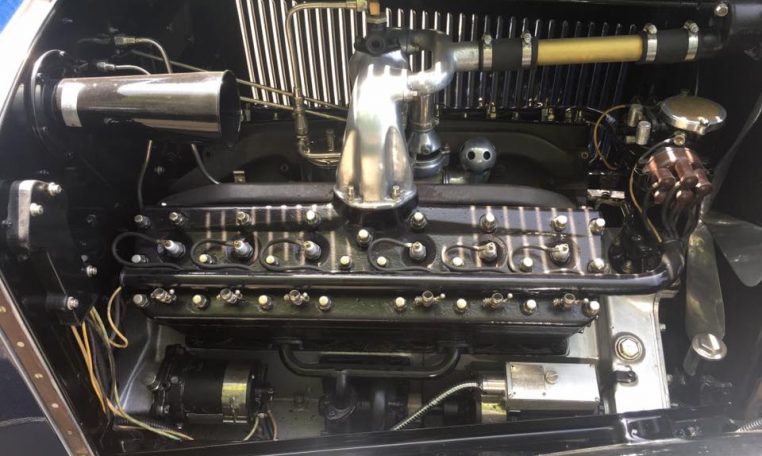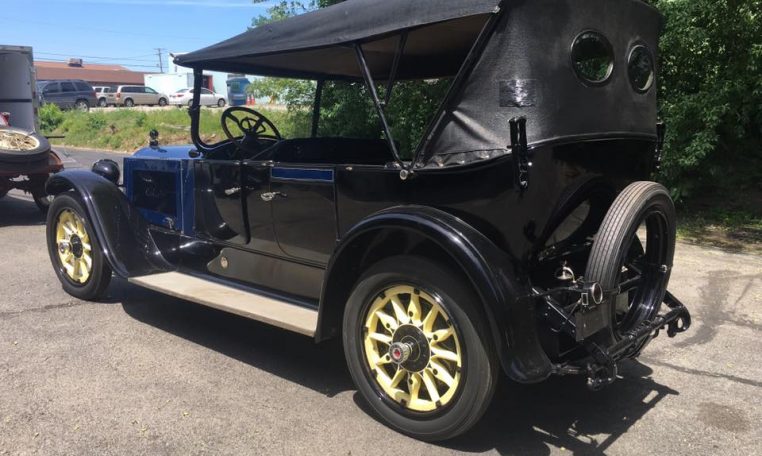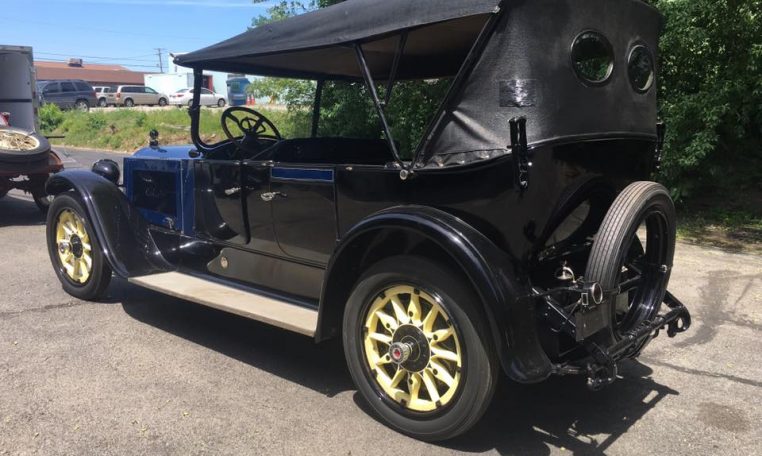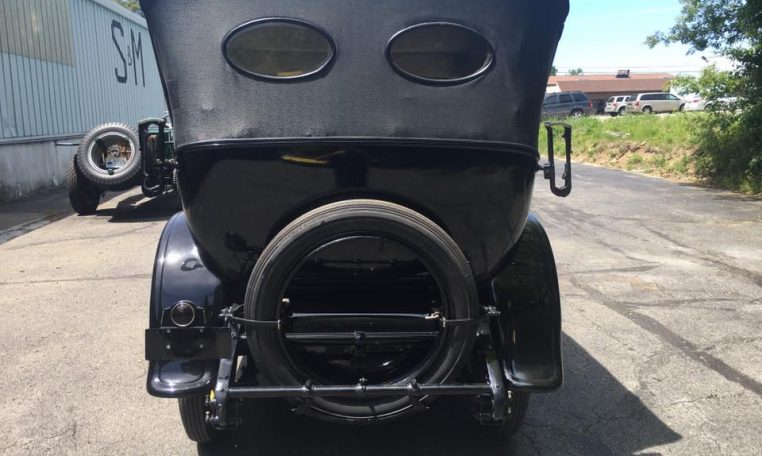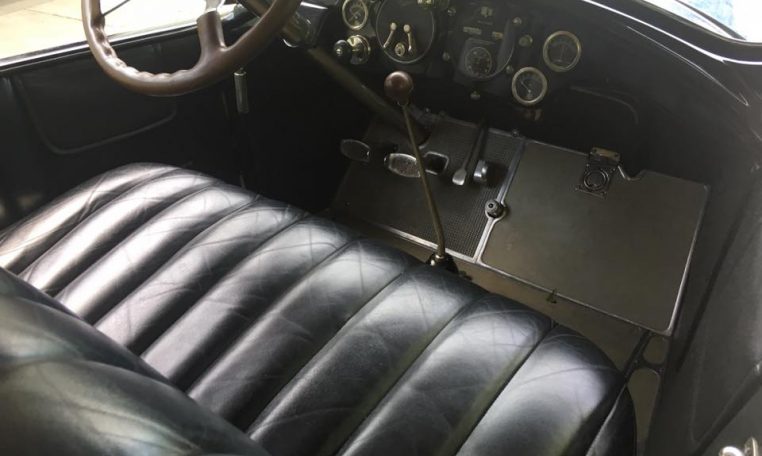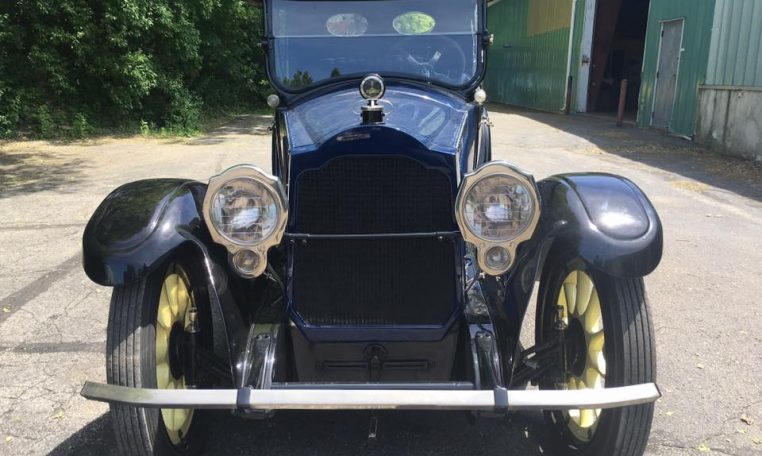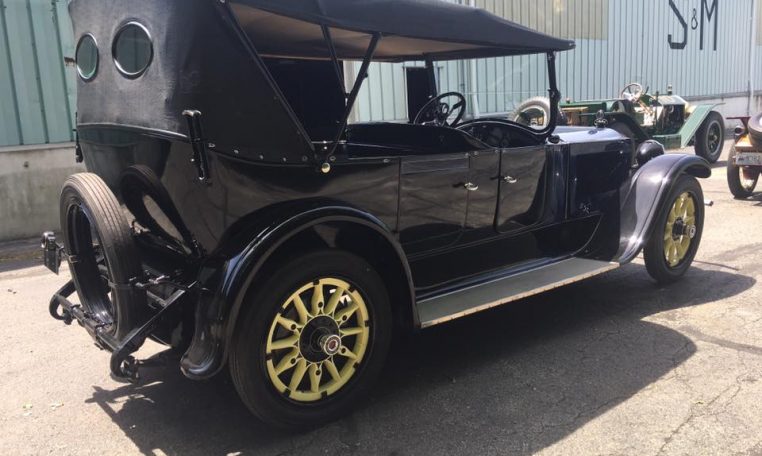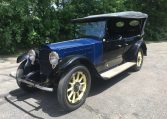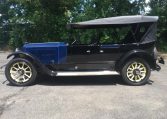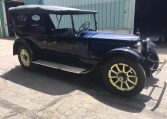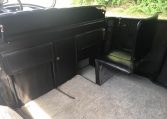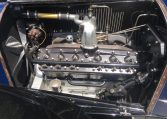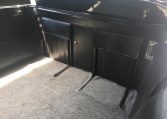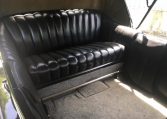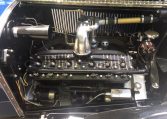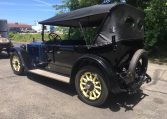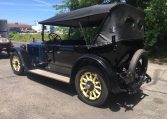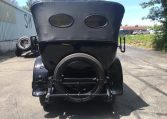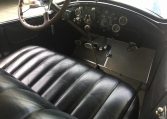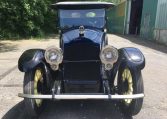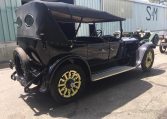1920 Packard Twin Six Touring
Low milage original1920 Packard Series 3-35 Twin Six Seven-Passenger Touring
Chassis No. 160466
Engine No. 160466
88 bhp, 424.1 cu. in. L-head V-12 engine, three-speed manual gearbox, solid front axle and live rear axle with semi-elliptical leaf springs, and two-wheel mechanical brakes. Wheelbase: 135 in.
By 1915, the Packard Motor Car Company was well established as a manufacturer of prestige, quality motor cars. First alphabetically of the so-called “Three Ps,” with Peerless and Pierce Arrow, Packard almost always outsold its competitors. Its reputation was sterling, giving substance to a new slogan: Ask the Man Who Owns One.
Having progressed from a manufacturer of single-cylinder cars to fours and sixes, Packard was well-positioned to up the ante still further. A new car, called the “Twin Six,” debuted in May 1915. The engine was a 60-degree V-12, with two blocks of six cylinders set on an aluminum crankcase. It was designed by chief engineer Jesse Vincent. Formerly chief engineer at Hudson, Vincent joined Packard in 1912 and would go on the develop the Liberty V-12 aviation engine that saw great service in World War I. Displacement of the Twin Six was 424 cubic inches and it developed 88 horsepower. Motor Age was enthusiastic: “Never before have the principles of high-speed motor design been applied to a touring car engine of so large a size as this new Packard. It needs but little handling to realize that the result is not merely encouraging, but in excess of all possible expectations.” The first Twin Sixes were considered 1916 models, although Packard did not acknowledge model years until the 1930s.
Offered as the sole engine for the new First Series cars, it was available in two wheelbases, 125 and 135 inches, and a myriad of body styles priced from $3,050 to $5,150. By the time its successors, the 2-25 and 2-35, appeared in August 1916, nearly 8,000 had been built. It outsold the nearest luxury competitor, Pierce-Arrow, by four-to-one that year, and nearly eight-to-one the next. The 3-25 and 3-35 followed in 1918.
Variations on the Twin Six were Packard’s only offerings through 1920, when a lighter and less expensive car, variously referred to as the Single Six, Light Six, or Series 116, joined the line in September. The Twin Six continued in production beside the Single Six until 1923, when a final 303 cars were built. Not until 1932 would Packard offer another 12-cylinder car. Although called “Twin Six,” the new engine was not at all like the original item. Thereafter, the company called it simply “Twelve.”
This Twin Six Seven-Passenger Touring exhibits a high degree of originality commensurate with the barely 8,000 miles shown on the odometer, believed to be correct. It has benefited from selective sympathetic upgrades, including an immaculate detailing of the engine compartment, a new black leather interior some time ago and a repaint within the last few years. The latter was completed with the body and fenders in black, and hood and cowl in a dark shade of blue. A blue accent panel on the rear doors is highlighted with a fine light gray pin stripe, which is echoed on the concave coupe pillar where body meets cowl. The wheels are finished in a shade of straw, accented with subtle blue designs. The top is of much older vintage and shows its age. A look underneath reinforces the impression that the car has never been apart.
The car starts easily and runs well, and is a delight to drive. Just 8,750 Twin Six Packards were built over the four-year run of the 3-35 model, not quite 2,200 a year. Survivors are scarce, making this car a very desirable benchmark for correct detail. Just ask the man who owns one…
- There are no features available
